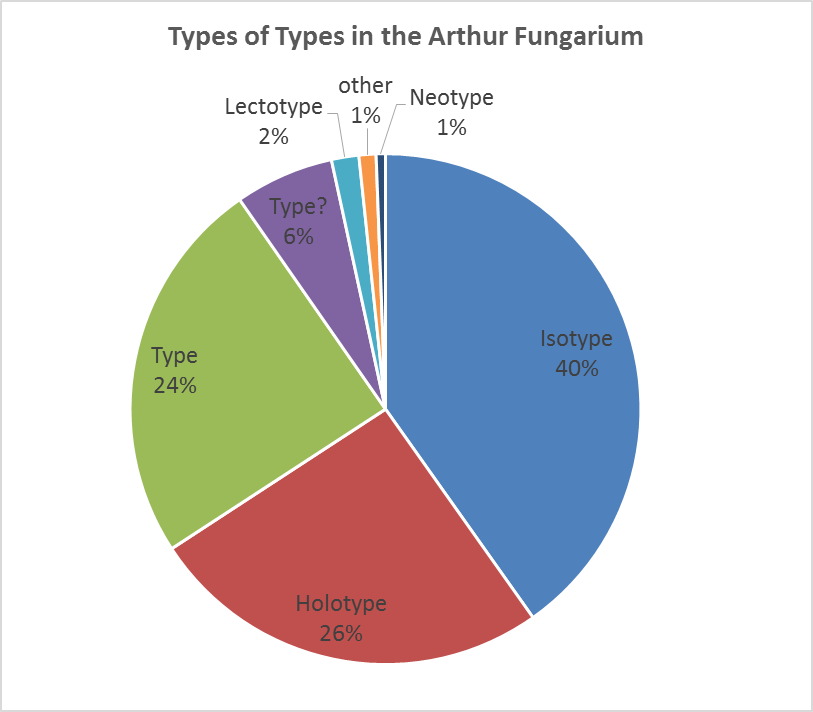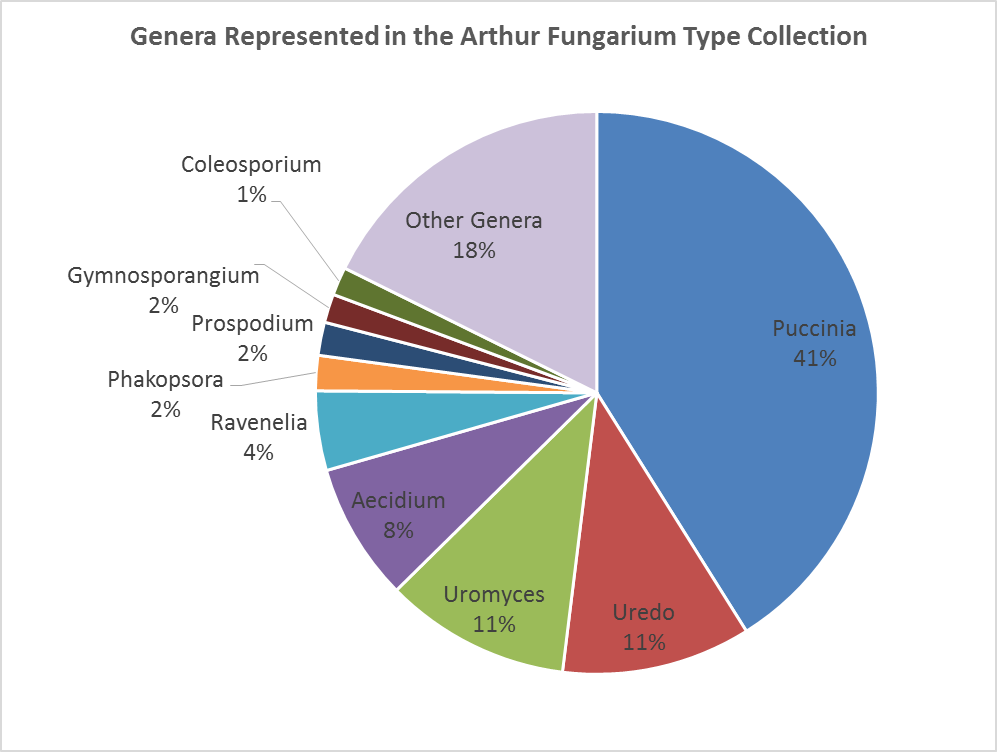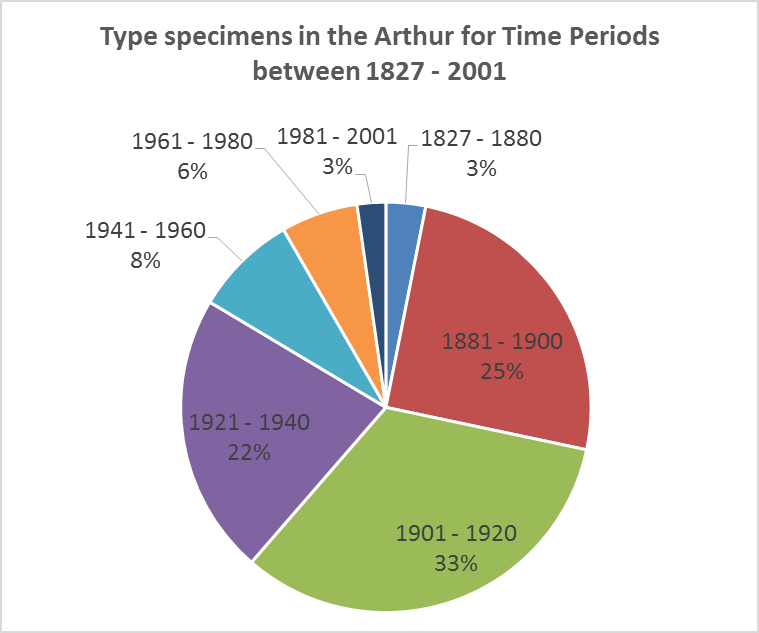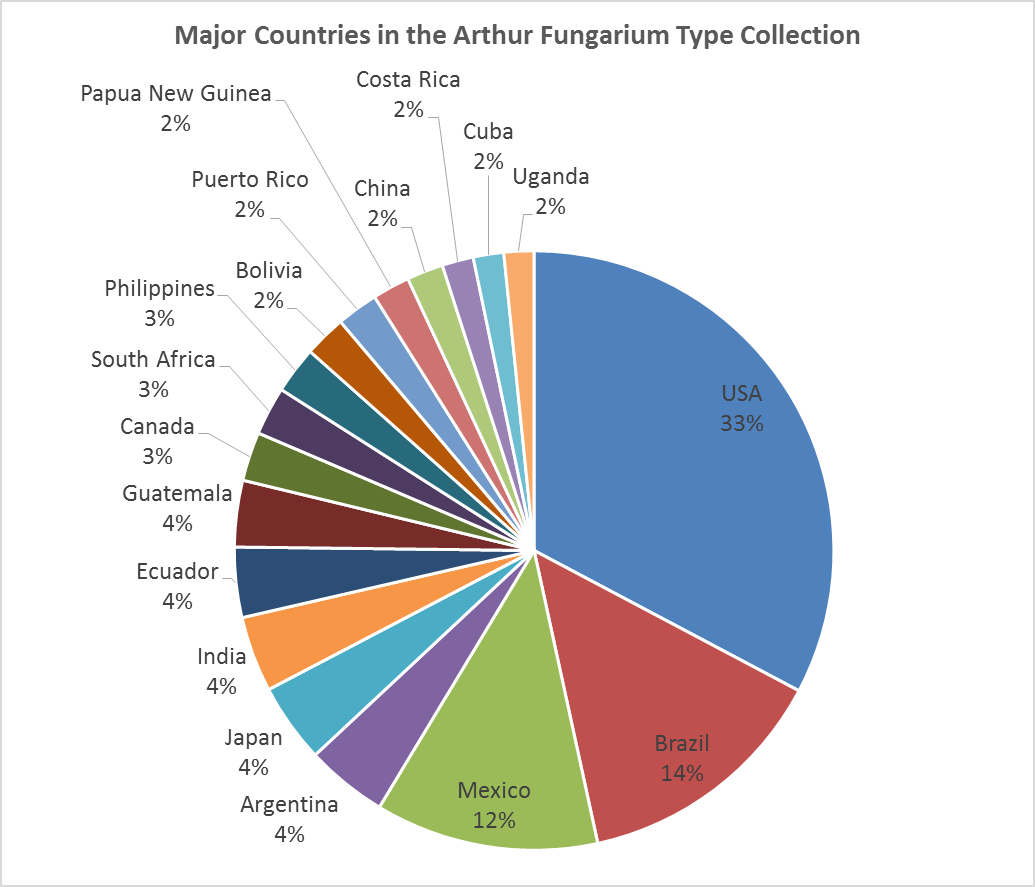What is a type specimen?
According to a precise set of rules laid down by the International Code of Nomenclature for algae, fungi, and plants (ICN), the scientific name of every taxon is almost always based on one particular specimen. This is usually a physical specimen that must be accessioned in a museum or herbarium research collection.
Types are of great significance. When identifying material, a researcher attempts to apply a taxon name to a specimen or group of specimens, and this will be based on their understanding of the relevant taxa, using (at least) the type description, but preferably based on an examination of all the type material of all of the relevant taxa. If the taxon appears not to have been named, then the scientist or another expert designates a type specimen and publishes a new name and an official description.
This process is crucial to the science of biological taxonomy and biology as a whole, and these type collections are considered the lynchpin of biological research.
Designation of types
There are actually several classification of types. Here are the definitions of some common types:
- Holotype: When a single specimen is clearly designated in the original description, this specimen is known as the holotype of that species.
- Isotype: Any duplicate specimen of the holotype.
- Lectotype: Designated as the type when no holotype was identified by the original author, or when the holotype is lost or destroyed. It is chosen from among the specimens available to the original publishing author.
- Syntype: Any of two or more specimens listed in the original description of a taxon when a holotype was not designated.
- Isosyntype: A duplicate of a syntype.
- Paratype: A specimen not formally designated as a type but cited along with the type collection in the original description of a taxon.
- Neotype: A specimen chosen by a later researcher to serve in place of a holotype when all specimens available to the original publishing author of a scientific name have been lost or destroyed.
- Topotype: A specimen of a plant collected from the same locality as the holotype and usually on a different date. A topotype has no formal standing.
- Cotype: A term formerly used for syntype and sometimes (erroneously) for isotype and paratype. This is an old term that was used loosely and is not used by today's taxonomists.
Arthur Fungarium Types
The Arthur Fungarium (PUR) has an estimated 4,000 type specimens, with over 3,500 currently verified and almost 1,500 imaged under JSTOR's Global Plants Initiative. The Type collection in the PUR covers all 14 rust families and 144 genera (of an estimated 168) with roughly 3,500 species represented. Below are summaries of our type specimens for type classifications, genera, collection periods, and country of origin.

As mentioned above, an Isotype is a duplicate specimen of the holotype. We have many Isotypes in the Arthur as George B. Cummins, when writing his various rust fungi guides, consulted hundreds of type specimens and was supplied with samples from many of them. Some of these isotypes are mere fragments, millimeters in size, of the original collection, but they still hold valuable information.
Designating a specimen as a holotype, when it is not explicitly stated for the specimen, is something that we do with reservation. Occasionally, the actual PUR accession code is cited in the species publication or the sheet/packet is clearly marked as being from the collectors herbarium. However, it is more often the case that only the collection information is given in the publication and so the actual status of the specimen is unknown, only that it is some form of type for that species.
In these instances, the status "type" is given, meaning we can confirm that this is indeed type material but we are unsure whether it is a holotype, isotype, or some other form of type. If we only have partial collection information we have used the term "type?" (as suggested by the Global Plants Initiative) indicating that a specimen appears to be type material but we are unsure.

Puccinia species account for more than half of the known species of the rust fungi, and more than half of the specimens in the PUR are Puccinia species. Understandably, the PUR type collection is mainly comprised of Puccinia species.
The anamorphic (asexual) genera, Uredo and Aecidium, account for a large portion of types. Many of these species are yet to be placed in their teleomorphic (sexual) genus. The type specimens held by the PUR therefore represent very important and informative samples of these species, should they be the focus of future nomenclatural and taxonomic work.

The majority of the type collection, just over 80%, was collected between 1927 and 1940. This is not surprising; as taxonomy became more popular during this era, specimen collection and species discovery was more prevalent. This has slowed in recent decades, as has the rate of species discovery.
Additionally, the Purdue University Herbaria have often lacked a director or urediniologist during the late 20th and into the 21st century. The PUR grew tremendously in the past under the direction of prominent urediniologists. The PUR has over 400 types for which Dr. Joseph. C. Arthur was the author, or co-author, of the species name, over 400 with Dr. George B. Cummins as the author, and over 200 with Dr. Joe F. Hennen as the author. With the appointment of Director Dr. M. Catherine Aime in 2012, we are witnessing a rennaisance in the acquisition of additional rust fungi collections, from both herself and other institutions. Continuing leadership will expand the PUR type collection with the addition of representatives of more recent species.

Just as a large portion (50%) of the PUR has origins in the United States, a large portion of our type collection is from species collected domestically. Brazil and Mexico are also heavily represented. This is because the director of the PUR during the 1980s and 1990s (Dr. Joe F. Hennen) specialized in Central and South American Pucciniales. With the 2013 return of an uncataloged loan from Dr. Hennen of some 20,000 specimens, we are sure to find additional type specimens from this area, as well as additional types in general. We estimate that the Hennen loan may contain 500–800 type specimens.
